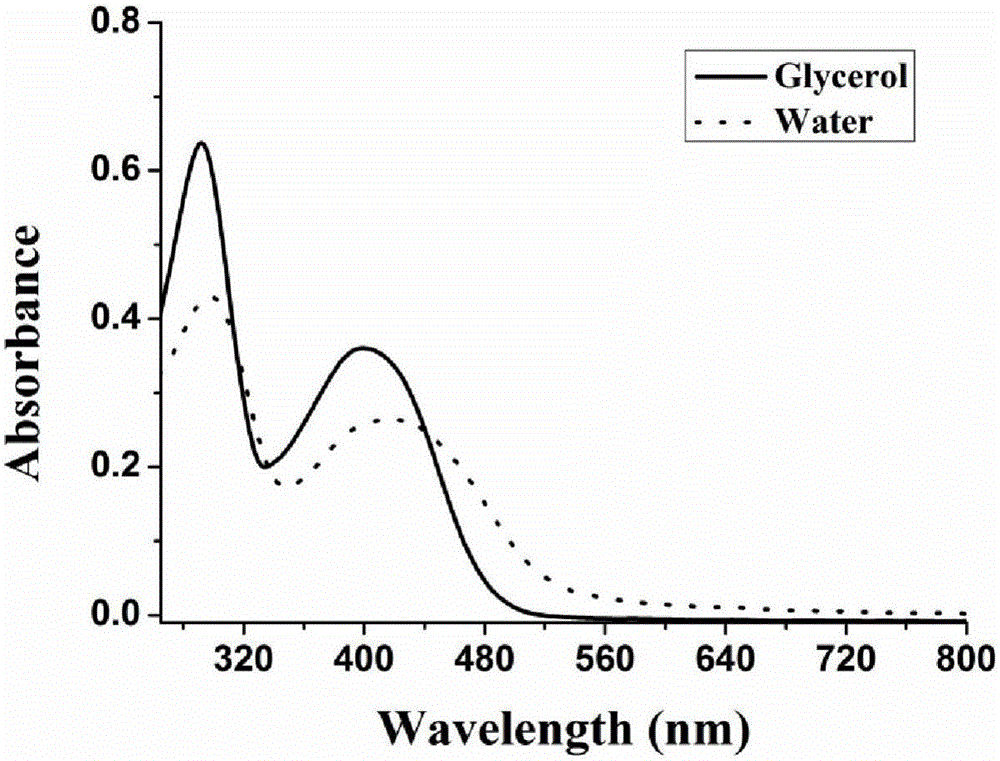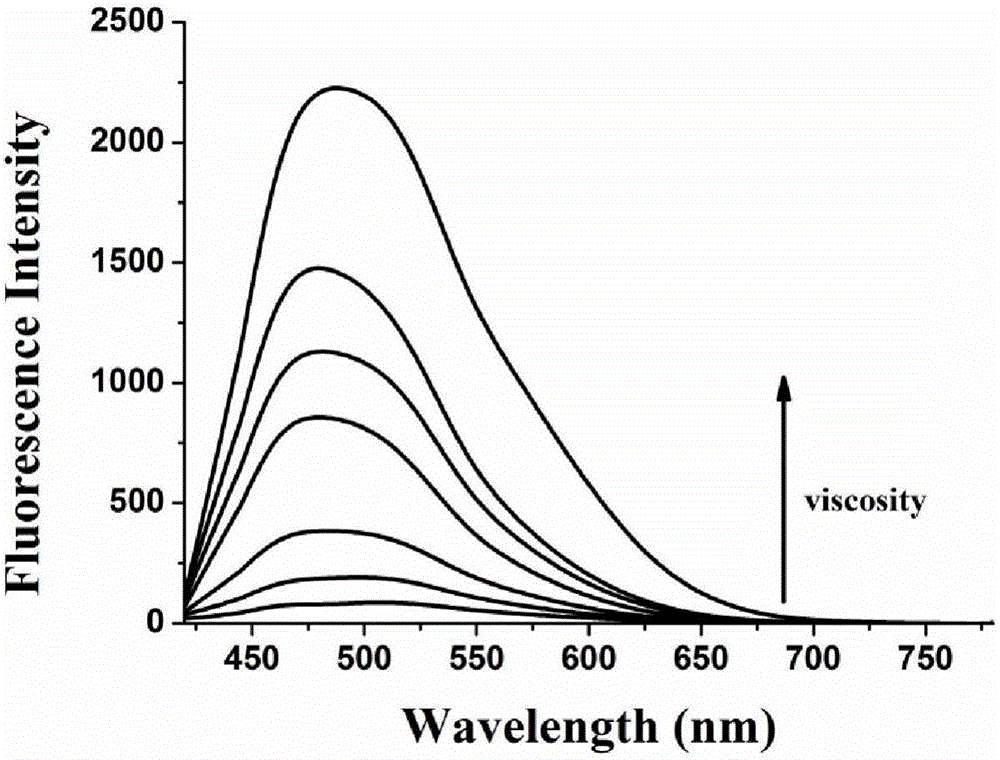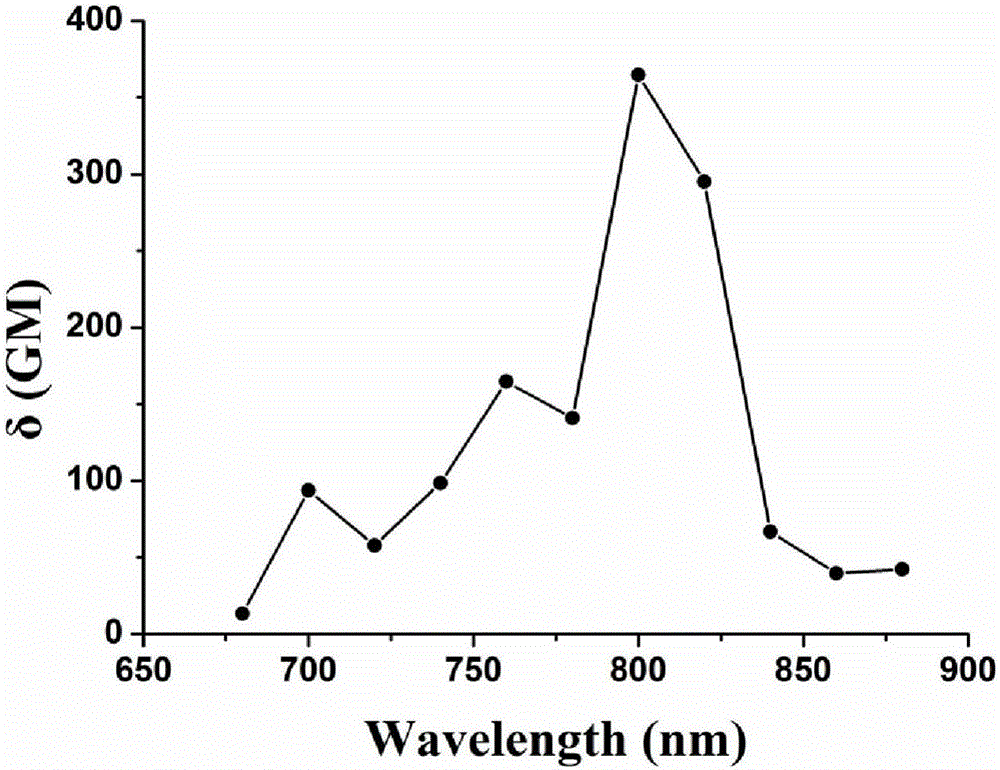Two-photon viscosity fluorescence probe as well as preparation method and application thereof
A fluorescent probe and two-photon technology, applied in the direction of fluorescence/phosphorescence, chemical instruments and methods, luminescent materials, etc., can solve the problems of high cell phototoxicity, small excitation wavelength, fluorescence self-quenching, etc., and achieve high sensitivity and operation Simple and highly selective effect
- Summary
- Abstract
- Description
- Claims
- Application Information
AI Technical Summary
Problems solved by technology
Method used
Image
Examples
Embodiment 1
[0027] Embodiment 1: the synthesis of fluorescent probe molecule MCN
[0028] Dissolve 3.6g of compound 1, 1.24g of malononitrile and 0.38g of basic alumina in 40mL of dichloromethane, stir and react at room temperature for 4h, filter the mixture, spin the filtrate to remove the solvent to obtain a crude product, and then use column layer Chromatographic column separation (ethyl acetate / petroleum ether = 1 / 4 as eluent, v / v) gave 3.36 g (10.04 mmol, yield 80%) of the target product.
[0029] The structural formula of the compound 1 is:
[0030]
[0031] 1 HNMR (400MHz, DMSO): δ8.72(s, 1H), 8.59(d, J=8.5Hz, 1H), 8.29(s, 1H), 8.05(d, J=8.9Hz, 1H), 7.96(d ,J=8.8Hz,1H),7.88(d,J=8.5Hz,1H),7.59(d,J=8.6Hz,2H),7.04(d,J=8.6Hz,2H),3.82(s,3H ). 13 CNMR (100MHz, CDCl 3 ): δ160.38, 156.99, 148.44, 147.31, 136.87, 133.82, 133.44, 130.40, 130.07, 128.97, 125.50, 122.81, 114.59, 114.29, 113.69, 112.15, 93.67, 87.602
Embodiment 2
[0032] Example 2: Two-photon testing of fluorescent probe molecules
[0033] Dissolve the fluorescent probe of the present invention in DMSO to prepare a 1mM mother solution, take 150 μL of the mother solution in a 10mL volumetric flask, and then use glycerol / water mixed solutions of different volume ratios (the volume ratio of glycerol and water is 50:50 respectively) , 60:40, 70:30, 80:20, 90:10, 95:5, 99:1) to constant volume, and prepared to 15μM. The excitation wavelengths of the single-photon and two-photon fluorescent probes are 400nm and 800nm respectively, and the fluorescence spectrum changes in the wavelength range of 420-780nm are detected.
[0034] Using two-photon testing technology, the two-photon absorption cross section of the fluorescent probe (MCN) was tested in different viscosity systems, from image 3 It can be seen that the maximum two-photon absorption cross section of the fluorescent probe molecule in glycerol is 400 GM, and the two-photon excitatio...
Embodiment 3
[0035] Example 3: Cytotoxicity Test
[0036] The MTT (3-(4,5-dimethylthiazole-2)-2,5-diphenyltetrazolium bromide) experiment was based on the reported articles to do some cytotoxicity tests. Add 0, 5, 10, 15, 20, 25 μM fluorescent probes to the same batch of cells respectively, the condition is at 37°C, containing 5% CO 2 According to the formula of cell viability: cell viability %=OD570 (sample) / OD570 (control group) × 100, the cell viability can be calculated ( Figure 4 ). from Figure 4 We can see that when the concentration is 15 μM, the survival rate of the cells is about 92%, which shows that the fluorescent probe of the present invention has no toxic effect on the cells, so it can be used to detect the viscosity in the cells.
PUM
 Login to View More
Login to View More Abstract
Description
Claims
Application Information
 Login to View More
Login to View More - R&D
- Intellectual Property
- Life Sciences
- Materials
- Tech Scout
- Unparalleled Data Quality
- Higher Quality Content
- 60% Fewer Hallucinations
Browse by: Latest US Patents, China's latest patents, Technical Efficacy Thesaurus, Application Domain, Technology Topic, Popular Technical Reports.
© 2025 PatSnap. All rights reserved.Legal|Privacy policy|Modern Slavery Act Transparency Statement|Sitemap|About US| Contact US: help@patsnap.com



